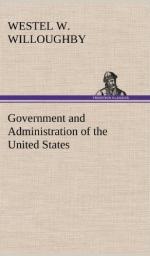Reconstruction.
The conclusion of the civil war in 1865 did not relieve the United States Government of its extraordinary difficulties. There was the whole South, a conquered territory, occupying the anomalous position of a district, still within the Union, yet possessing no legal state governments. The Confederate government had now been destroyed by the North, and the South was thus without a government. Four million slaves had been liberated, who were uneducated, without money, and living among people hostile to them. Congress had to provide for and protect these freedmen in their rights. The work to be done by Congress, was then:—1. To decide upon what terms and upon what conditions the seceded States should be re-admitted into the Union, and to provide for them a government until such re-admission. 2. To protect the negro.
The South, though in the Union, had at this time, of course, no representation in Congress, and consequently, the Republicans were in great majority. Unfortunately, Johnson, who succeeded to the Presidency at the death of Lincoln, though a Republican, disagreed with his party, and legislation upon this subject was only secured by passing all acts over his veto by a two-thirds vote.
After much discussion, the first Reconstruction Bill, “to provide for the more efficient government of the rebel States,” was passed in 1867, vetoed by the President, and passed over his veto. Its principal provisions were—1. The insurrectionary States were to be put under United States control, and for this purpose divided into five military districts, over each of which the President was to appoint a commanding officer. 2. The people of the various States might hold a delegate convention, elected by the citizens who had not been deprived of the right to vote for participation in the rebellion. The convention was to prepare a new constitution, which constitution was to be then submitted to the vote of the people, and when ratified by them and approved by Congress, should go into force, and the State be entitled to representation in Congress. Before approval by Congress the constitutions adopted by the rebel States had to agree in all the following particulars: (1) abolishing slavery; (2) declaring null and void all debts created by States in aid of the rebellion; (3) renouncing all right of secession; (4) declaring the ordinance of secession which they had passed null and void; (5) giving the right to vote to all male citizens, without regard to color; (6) prohibiting the passing of any law to limit or abridge the rights of any class of citizens.
In 1868 the Fourteenth Amendment was adopted by a sufficient number of States, and was declared a part of the Constitution.
In 1871 all the States were, for the first time since 1861, represented in both houses of Congress. Reconstruction by Congress was then completed.




